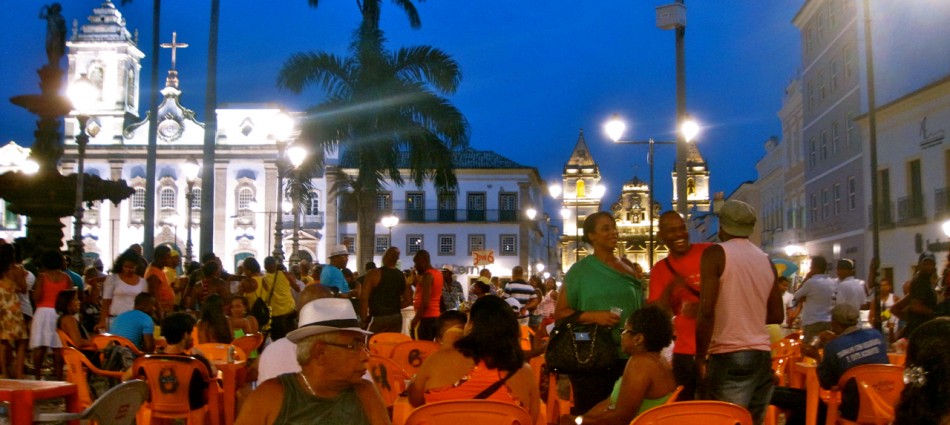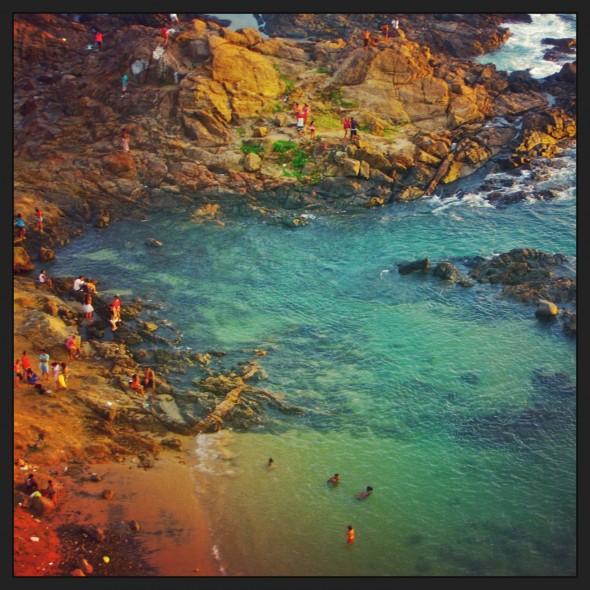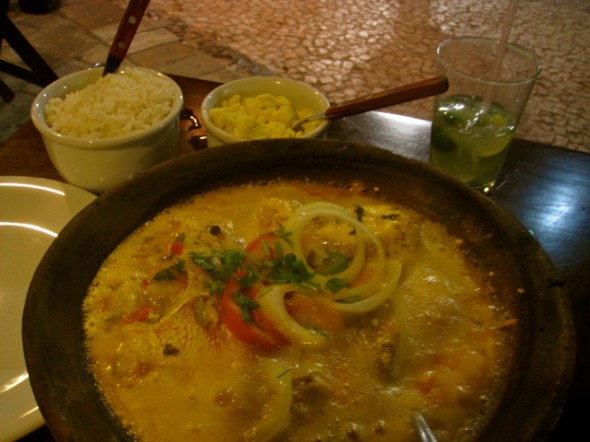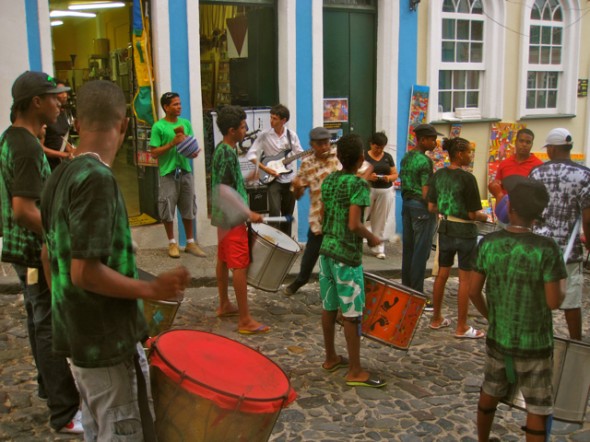Bridget Gleeson writer + illustrator

Terra da felicidade: A Return to Afro-Brazil
‘The city of Bahia, black and religious, is almost as mysterious as the green sea…’
A cidade da Bahia, negra e religiosa, é quase tão misteriosa como o verde mar…


So wrote Jorge Amado, one of Brazil’s most beloved storytellers. His novel Dona Flor e Seus Dois Maridos (Dona Flor and Her Two Husbands), rich with the sensuality of Bahia – the blazing heat, the still, clear sea, the potent flavors of Africa, the debauchery of Carnaval, sex and lust and nostalgia, savor and spice, the busy kitchen and the darkened bedroom – served as my literary introduction to this fascinating region of northeast Brazil.
Twice now I’ve spent extended periods in and around Salvador, the world’s Afro-Brazilian capital, updating sections of Lonely Planet’s Brazil guidebook. And even as I am here day in and day out, exploring and observing, tasting the food and listening to the music – Bahia remains, as Amado wrote, a mystery. It isn’t like any other place in the world.
Today Bahia is called terra da felicidade (the land of happiness) because of its famous street parties – Carnaval here in Salvador is supposedly one of the biggest parties in the world – and laid-back beach culture. But Salvador’s history is steeped in strife: discovered by the Portuguese in 1500, it became a hub of the slave trade between Africa and the Americas. Five million Africans were brought to Brazil as slaves between the 16th and 19th century. Shocking numbers of men, women and children died on slave ships.
Today, it’s the confluence of two cultures and a world of contrasts – Africa and Brazil, oppression and festivity, colorful African dresses and colonial European buildings, capoeira, musical instruments from Africa, the language of the Portuguese – that make Bahia what it is – whatever it may be, as I’m still trying to understand it. In a way, I hope the mystery is never solved, as the light and dark are part of the allure.
Some of the elements of this particular culture —

The Afro-Brazilian religion (or cult) of Candomblé, born and developed by African priests enslaved in Salvador in the late 16th century. The religion focuses on the spirits of nature – my favorite orisha (deity) is Yemanjá, goddess of the sea and of fertility. On February 2nd, local fishermen in the neighborhood of Rio Vermelho will take the people’s sacrifices (objects relating to women – flowers, jewelry, perfume, mirrors) out to sea on Yemanjá’s holy day. Above, a mural in her honor, across the street from the fishing boats.


Moqueca (left), a seafood stew blending Brazilian staples like fresh fish, onions, garlic, tomatoes and cilantro with African staples like coconut milk and the distinctive dendê (palm) oil. On the beach and street, everyone’s eating acarajé (right), deep-fried dough balls made from black-eyed peas. (A boiling vat of hot oil on the sand? When in Rome…)


Olodum, a cultural group and percussion school founded in 1979 with an emphasis on Afro-Brazilian pride and civil rights for minorities. Their signature mix of samba, salsa, reggae and merengue, known as ‘bloco afro’ music, is a centerpiece of Salvador’s Carnaval.
It’s all foreign and fascinating to me, even after the time I’ve been lucky to spend here. But I think that’s appropriate – I’m an outsider, and if travel isn’t humbling, confounding, and culturally challenging in some way, I think you’re probably doing something wrong.
Milton Hatoum, a noted contemporary writer from Brazil, captured that very thought, speaking in an interview about Jorge Amado’s portrayal of Bahia:
The world [Amado] created is full of lively, colorful, sensual characters. Not exotic.
But then again, they may seem exotic to those who have never seen what Brazil and Bahia are like….
From Salvador, capital of the terra da felicidade – wishing you all a happy Carnaval!